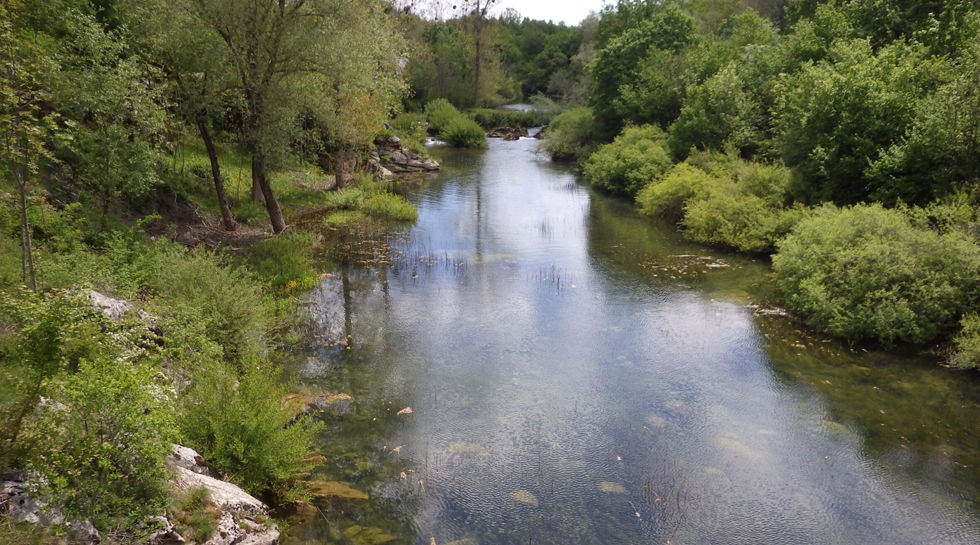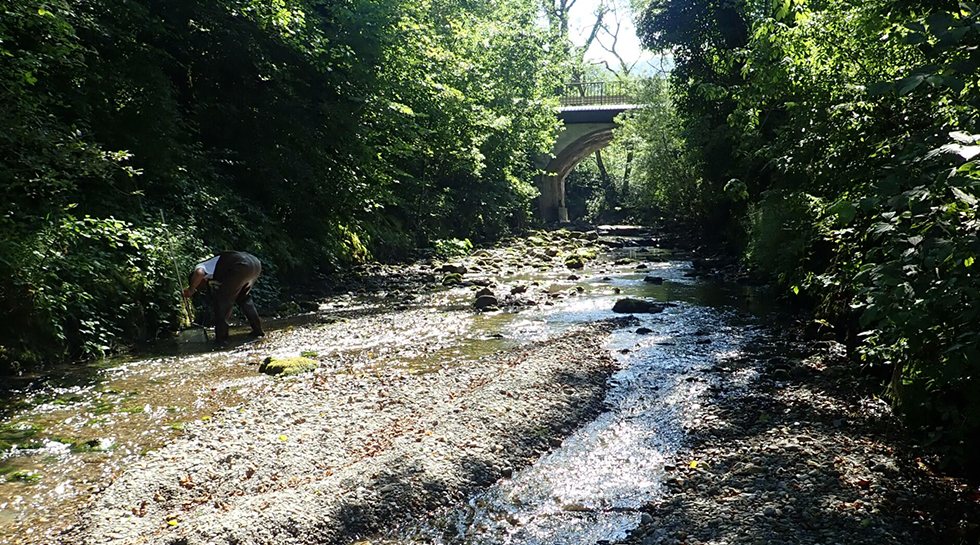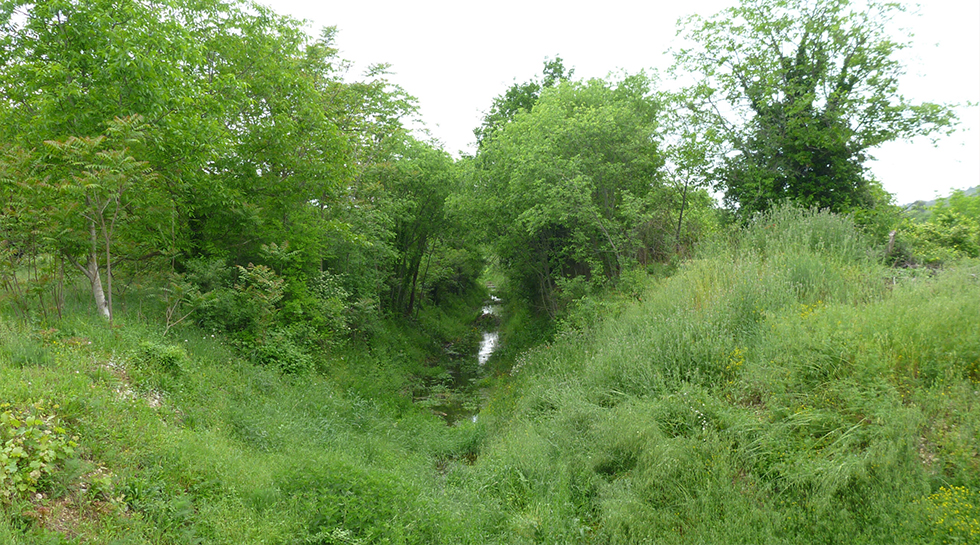Intermittent rivers


Intermittent rivers are characterised by periodic interruptions in flow. During dry periods, these rivers gradually stop flowing and pass from a lotic phase (characterised by a continuous flow of water) to a lentic phase (in which the flow stops and pools form) and finally end in a dry riverbed. These phases alternate cyclically and follow one another. The timing and duration of dry periods are closely linked to the amount of precipitation. A longer period without precipitation (meteorological drought) leads to a hydrological drought.
Such an extreme hydrological regime has a significant impact on the physical and chemical indicators of water, such as flow, water temperature, oxygen saturation, conductivity and nutrient concentration. As a result, intermittent rivers represent difficult habitats for the organisms that live in them, such as benthic macroinvertebrates (macrozoobenthos). During the flow period, intermittent rivers harbour a lotic ecosystem, while a lentic ecosystem is found in the stagnant pools; in the dry riverbed phase, a terrestrial ecosystem is formed. These three ecosystems alternate cyclically, and the dynamics of these transitions and the duration of each phase significantly influence the characteristics of the community.
Due to the specificity of the environmental conditions, aquatic macroinvertebrate communities in intermittent rivers are generally less diverse than those in permanent rivers. However, rare or endemic species often occur in these habitats, as the isolation of populations in intermittent rivers often leads to adaptation and specialisation of certain species.
During dry periods, species of benthic macroinvertebrates survive unfavourable conditions through resistant eggs, larvae or adult individuals buried in sediment or moist microhabitats (such as woody debris, foliage, algal mats and muddy sediment) or in isolated pools within the river, and they also use refugia that include nearby permanent water bodies. In addition, emergence of adult individuals before the onset of the dry season (terrestrial adults) is a strategy that allows survival during dry periods.
The drying up of rivers is a natural process. However, due to anthropogenic pressures, including water abstraction due to increasing demand, regulation of rivers and climate change, the number of intermittent flows and the duration of dry periods are increasing. It has been shown that frequent changes between dry and wet phases have less impact on the benthic macroinvertebrate community than the longer duration of dry periods. In other words, a longer duration of dry periods leads to a decrease in taxonomic diversity and the total number of species.
Intermittent rivers are found worldwide, especially in karst areas such as the Mediterranean. In Croatia, intermittent rivers are most common in the Dinaric ecoregion, especially in the Dinaric karst region and in Istria. This potential for increasing water scarcity makes the Mediterranean basin, including areas in Croatia, one of the most vulnerable regions in the world. The degradation of these habitats could have consequences for entire river networks, especially for populations that rely on the annual alternation between wet and dry periods. It is therefore crucial to protect intermittent rivers by regulating their status within the legal framework and raising public awareness of the problems associated with this type of habitat in order to conserve them.


